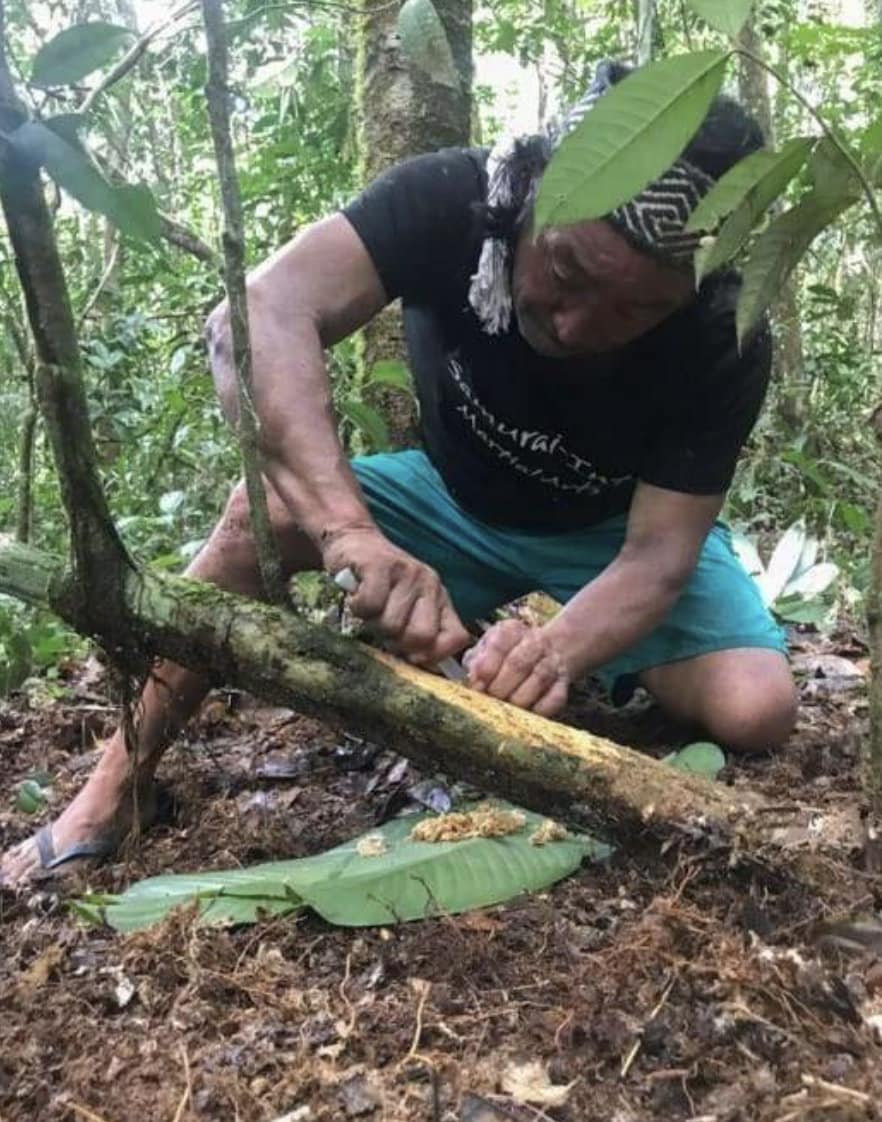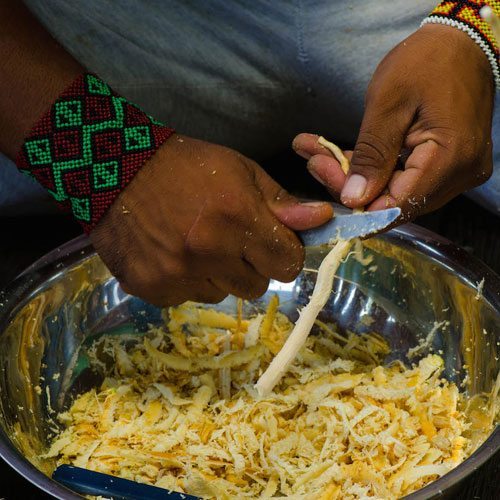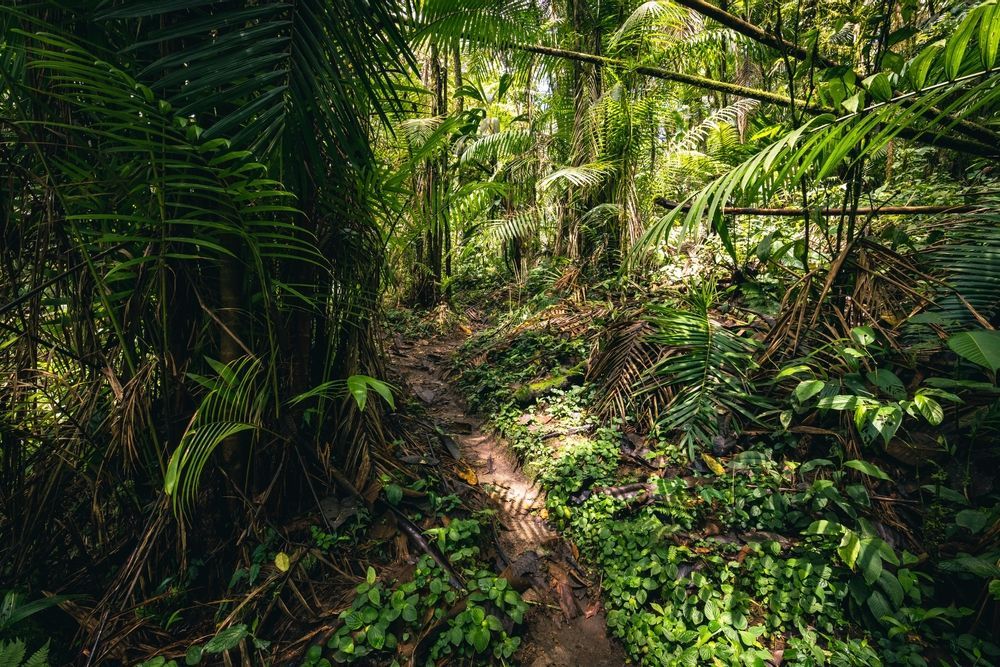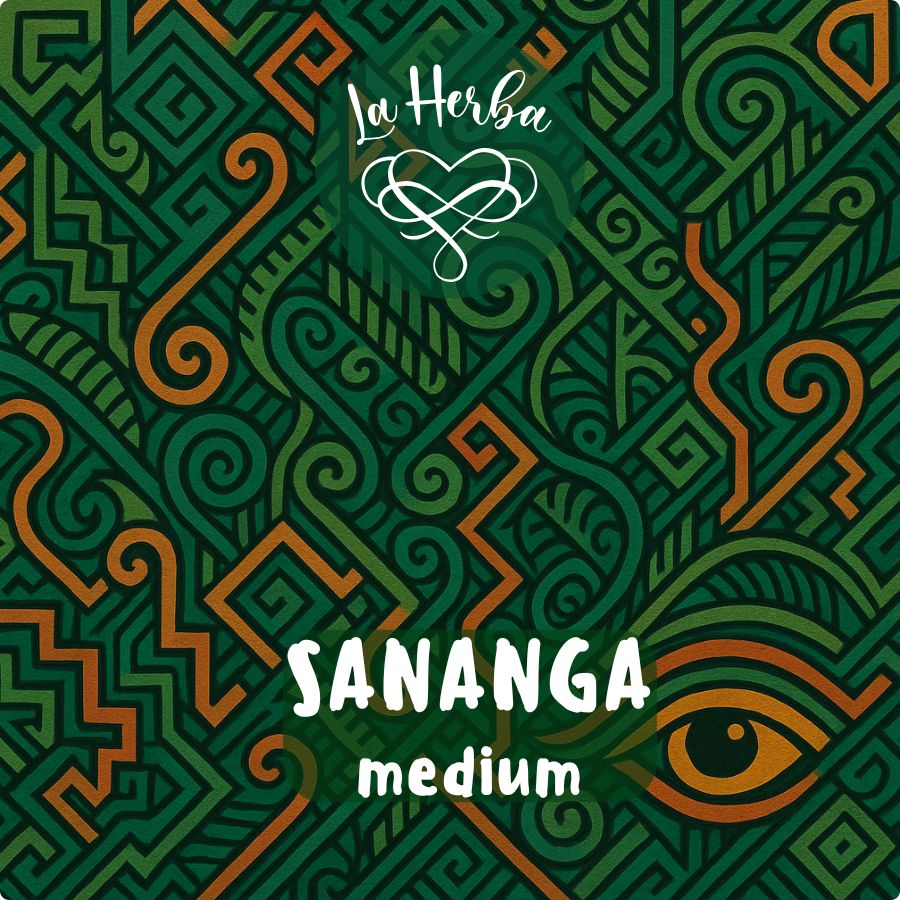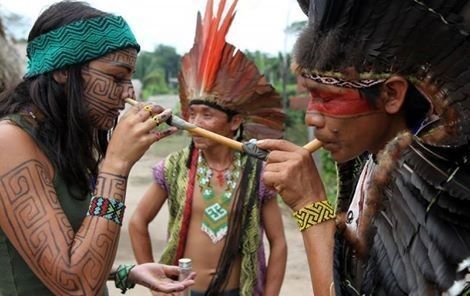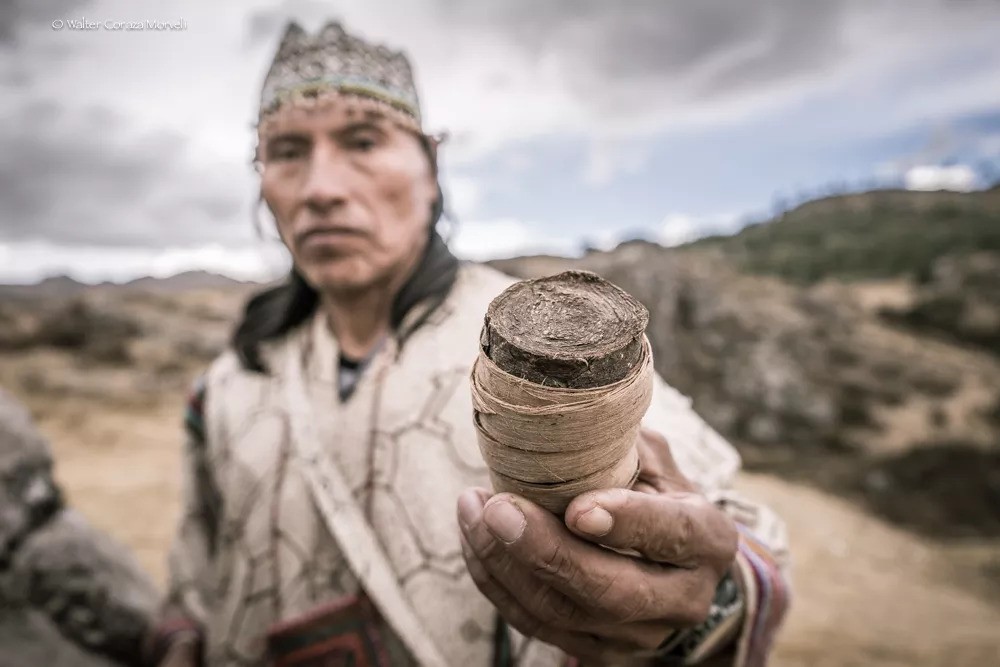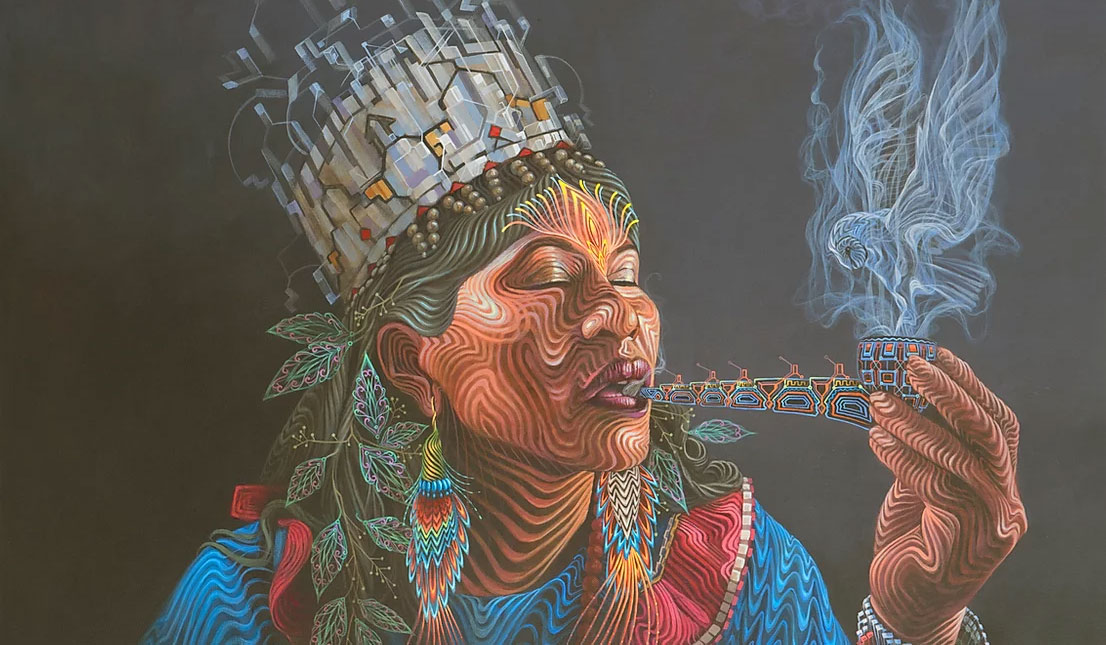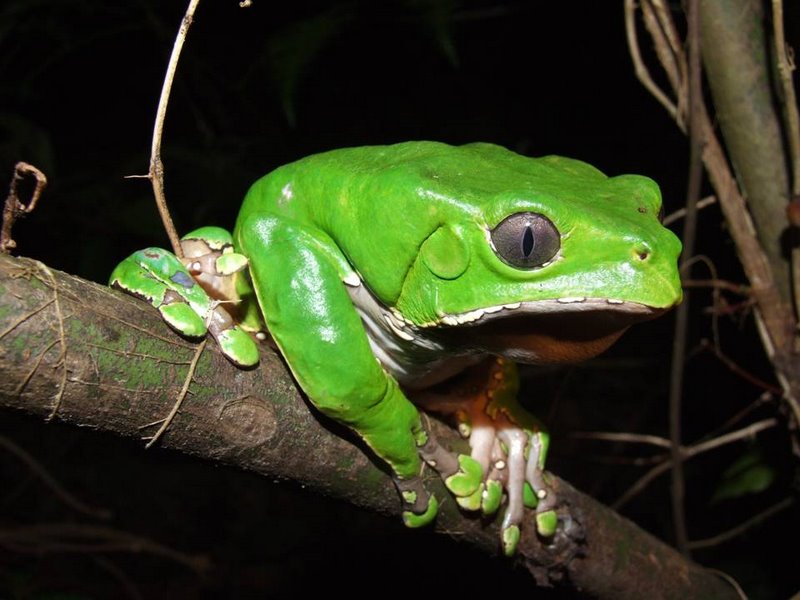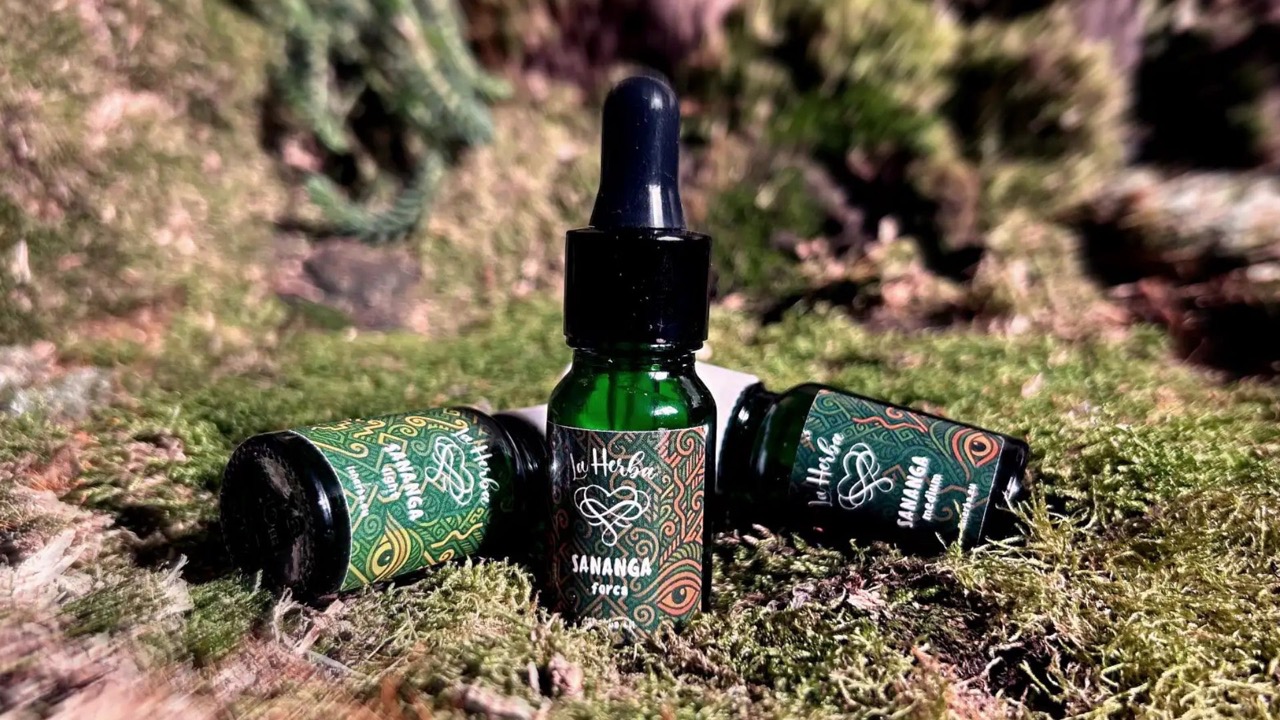
Sananga – a Sacred Plant Extract from the Amazon
Sananga is a remarkable plant extract from the Amazon rainforest, deeply rooted in shamanic traditions. It carries unique effects and an energy that words can hardly describe — but when you give it space, it can become a powerful companion on your path of inner growth.
A Plant from the Depths of the Rainforest
The indigenous people of the Amazon refer to this shrub as “Apocynaceae.” There are two main varieties of Sananga – Tabernaemontana undulata, commonly found in Peru, and Tabernaemontana sananho, more widespread in Brazil. Some say there are two other subtypes, but concrete information is limited. And maybe that's how it should be — true understanding often comes not from analysis, but from experience. The real wisdom is held within the medicine itself.
How Indigenous Tribes Use Sananga
Many tribes in the Amazon use Sananga to enhance their hunting abilities — it’s believed to sharpen vision, improve perception, and even grant “night sight.” It helps hunters detect even the smallest movements in the dense jungle. But its effects go far beyond physical eyesight — Sananga cleanses on all levels: physical, emotional, energetic, and spiritual.
Traditionally, it’s also used to clear what is known as “panemas” — a form of energetic heaviness or misfortune. This can show up as apathy, depression, irritability, frustration, mental fog, or fatigue. Sananga helps restore balance and revitalizes the inner self.
How Sananga Is Prepared
Sananga is made in a simple and natural way. The bark or root of the plant is thoroughly cleaned and peeled. It is then soaked in water for several hours — similar to steeping tea. The resulting extract is used as eye drops.
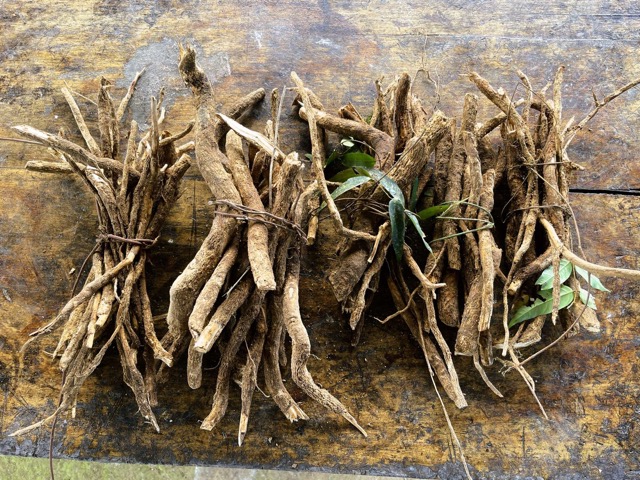
Words from a Shaman
Tuin Hua Kaxinawá, a shaman from the village of Caucho, describes Sananga as follows:
"The eyes are the windows to everything we see and create. They carry our memory and history. The spirit of Sananga brings healing — it draws out everything that weighs on the soul and body."
The Effects of Sananga
The Amazonian peoples have known the power of Sananga for centuries. In recent years, its use has spread far beyond the rainforest and is now often included in preparation for Ayahuasca, Kambo, or used on its own.
Energetically, Sananga is known to open the “inner vision,” activate the pineal gland, and dissolve mental blocks. It helps clear away negative thoughts and refreshes the aura from the inside out.
Sananga possible effects, benefits:
-
Detox the body
-
Improve color perception and visual clarity
-
Release suppressed anger
-
Rebalance the energetic system
-
Support healing of mental and emotional disturbances caused by negative energies
-
Help with conditions such as addiction, depression, and anxiety
-
Reset the energetic field
-
Treat spiritual imbalances (known as “panema”) caused by negative energy in the body
Beyond vision and perception, Sananga exhibits strong anti-inflammatory, antibacterial and calming effects. It is useful in treating skin diseases, rheumatism, sinusitis and migraines. Applied as poultices, it accelerates wound healing and can soothe dental inflammation. It also helps treat eye conditions such as glaucoma and cataracts.
It also supports chakra alignment — particularly the third eye and crown chakra. It can enhance visualization, intuitive insight, and spiritual clarity.
In traditional medicine, Sananga is also used as a remedy for fever, to stimulate elimination, soothe the skin, ease dental issues, and aid in healing wounds or eye infections.
A Powerful Healing Plant
Plants from the Apocynaceae family are known for their strong antimicrobial and anti-inflammatory properties. Sananga acts as an antioxidant, may have anticancer potential, reduces fever, and works as an antifungal and antibacterial agent. Many people report that it helped them release old emotional traumas, cleanse their energetic field, and support lucid dreaming.
Interesting read: Scientific Studies Hint at How Sananga Eye Drops Treat Ocular Diseases
How to Apply Sananga?
The human eye is one of the most sensitive organs in the body, which is why a Sananga ritual can be a powerful experience. These sacred shamanic eye drops usually cause a burning sensation that lasts for a few minutes. However, experienced practitioners say that this intensity is part of the healing — not something to be feared, but embraced.
Sananga is best applied while lying down. One or two drops are placed into each eye, and it’s helpful to blink a few times to spread the liquid. Shamans recommend focusing on your breath after application — deep, conscious breathing allows you to fully surrender into the experience. Moving through the discomfort opens the door to a deeper cleansing — of the body, mind, and spirit. After the initial sting fades, people often describe a state of profound calm and clarity. That’s why Sananga is frequently used as part of Ayahuasca preparation.
How to Use Sananga Safely
Sananga can be used on its own or in combination with other plant medicines such as Ayahuasca or Kambo. If you wish to experience its healing potential, it is possible to apply it yourself — just make sure you source it from a trusted and high-quality provider. It’s also a good idea to learn how to apply it properly and create a quiet, safe space where you can focus fully on your inner process.
Sananga storage
Over time, Sananga loses its potency. That’s why it should be kept cool and in the dark — ideally in the refrigerator. Shake well before use.
Comparison of Sananga with Other Plant Medicines
Rapé vs. Sananga Rapé is blown into the nose, while Sananga is dropped into the eyes. Rapé works to ground, connect with the body, and anchor oneself. Sananga, on the other hand, brightens, opens, and cleanses the "vision."
Ayahuasca vs. Sananga Ayahuasca is a powerful psychedelic; Sananga is not. Sananga is often administered before Ayahuasca to prepare the soul and body for the deep experience.
Kambo vs. Sananga Kambo is a physically demanding cleansing ritual from frog skin. Sananga is gentler but can trigger similar processes on an emotional level.
TIP: You can use Sananga on its own, or as part of a ceremonial cycle with other plants.

People's Experiences and Stories with Sananga
Jana, 42 years old: "Sananga first opened my inner vision. I felt an immense warmth in my chest, as if something had been held there for a long time and finally left."
Martin, therapist: "I use Sananga with clients before breathwork. It helps them tune into their bodies, quiet their minds, and open up to the process. Many say they feel more present."
From a retreat in Ibiza: "It felt like an internal explosion of light. Tears flowed, but they weren't tears of pain. It was a cleansing. After Sananga, I had prophetic dreams all weekend."
Sananga and the Scientific Perspective
The plant Tabernaemontana undulata contains indole alkaloids, which have shown antibacterial, anti-inflammatory, and neuroactive properties in preliminary studies.
Laboratory analyses are underway in both Brazil and Japan to study the effects of its extracts on inflammation and pathogens. While there are no official clinical studies on ophthalmic use yet, knowledge from traditional medicine is consistent.
Scientists recognize that ethnobotanical knowledge can be key to discovering new medicines. Sananga has potential not only as a spiritual tool but also as a natural medicine of the future.
TIP: If you're interested in the science, follow research in the field of "ethnopharmacology"—Sananga is often mentioned there.
Haux e mta alegria!
Disclaimer - Ethnobotanical Sample. Not intended for internal use.
Sananga eye drops are not approved or registered as an official medicine. Use is solely at your own risk. Sananga is not a substitute for conventional medical care. If you suffer from a serious health problem or imbalance, we recommend that you consult with your doctor or another qualified professional.
We offer this natural product for its ethnographic and historical value—without any express or implied warranty of efficacy for a specific purpose. This is a raw botanical or research sample material. All information provided is for historical, scientific, and educational purposes only and should not be interpreted as a recommendation for a specific use. The use of this product is entirely at your own discretion, responsibility, and risk.
Hapé sacred medicine, shamanic snuff
Hapé or Rapé (Hapeh, Rapeh, Hapey) is legal and sacred shamanic medicine from the Amazon, pronounced "ha-peh" in English, is a fine powder prepared from Mapacho and a mixture of herbs, seeds, and a...
Mapacho: Sacred Tabaco and a Bridge to Spirit
Mapacho, also known as Nicotiana rustica, holds a deeply respected place in Amazonian traditions. Far more potent than the everyday tabaco found in cigarettes, Mapacho has been used for centuries b...
Mapacho / Rapé icaro for calming and grounding energies
In the Amazon tradition, when an apprentice follows the path of the curandero (“healer”), he follows diets that allow him to connect with the spirits of the plants. In this moment of deep communion...
Kambo frog vaccine medicine
Kambô, also known as the “frog vaccine,” is the cutaneous secretion of the frog Philomedusa bicolor, native to the Amazon rainforest. Originally, the use of kambô is associated with the native conc...

